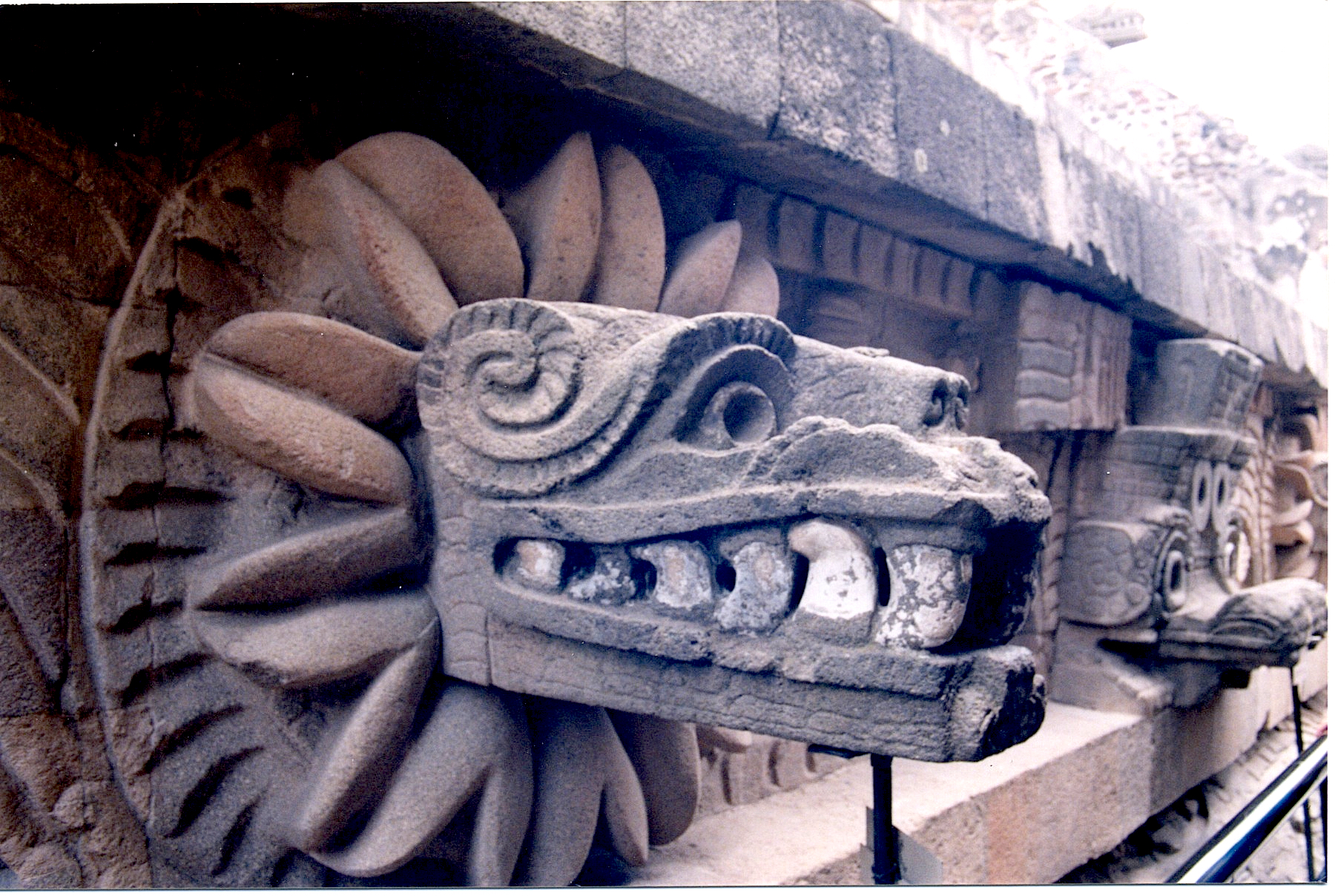Photos: The Amazing Pyramids of Teotihuacan
Thriving metropolis

Teotihuacan (pronounced te-o-tee-waka-n) is believed by archeologists to be the first major city of the Americas. It was located in the northeastern region of the Valley of Mexico, some 35 miles (56 kilometers) from modern Mexico City. It existed from about 100 B.C. to A.D. 550.
At its prime, Teotihuacan was about 14 square miles, (36 square km), in size and was home to a variety of native people from many different regions, including the Maya, Mixtec and Zapotec. By A.D. 400, Teotihuacan was the most densely populated city in all the Americas with a population of more than 100,000 individuals.
Multicultural megacity

Teotihuacan became the region's political, cultural, economic and religious epicenter. The ceremonial core of the great city was built along what is today called the Avenue of the Dead, shown above. This massive road was aligned north and south and measured 3 miles (5 km) long and 131 feet (40 m) wide.
Away from the ceremonial area, a grid-like layout of apartment complexes, similar in architectural design, were available for extended family groups. Many of these family groups appear to have specialized in a specific craft, such as the creation of ceramics or the working of obsidian.
Lost to history is any common language of the Teotihuacanos, but with so many differing groups of people, the city was most likely multilingual.
A mix of cultures

Modern archeologists do not know what the citizens of this great ceremonial center called their city or even themselves. The name "Teotihuacan" comes from the Nahuatl language and is thought to mean "place where men become gods." Nahuatl was spoken by the Mexica (pronounced “Meh-she-ka") people at the time of the Spanish conquest in A.D. 1519. The Mexica were the builders of the great city of Tenochtitlan, (pronounced "Teno-chit-lawn"), known today as the City of Mexico, or Mexico City.
Along with the Texcoco and Tepaneca people, the Mexica formed a triple alliance establishing what modern historians call the Aztec empire. The great Aztec calendar stone, shown above, was found buried beneath a public plaza known as the Zócalo in Mexico City in 1790.
Pyramid of the Feathered Serpent

Three pyramids are the cornerstones of Teotihuacan and are an impressive testament to the skills of the ancient people who built these pyramids, as well as the entire city without horses, mules or oxen and without any metal tools.
The smallest of the pyramids (shown above) is known today as the Pyramid of the Feathered Serpent and has a base measuring 213 feet by 213 feet (65 by 65 m) and towers 75 feet (23 m) high. It is located at the southern end of today’s restored Avenue of the Dead, but it was once at the center of the City of Teotihuacan, in a ceremonial area known as the Ciudadela Complex.
The Ciudadela Complex encloses a massive sunken area of 1,400 square feet (130 square m) that would have created a space large enough for all 100,000 citizens to gather and engage in large public rituals.
Impressive structures

The Pyramid of the Feathered Serpent takes its name from the hundreds of serpent heads carved into its sides during the third century. Massive and impressive carvings of two serpent deities are found here — the first being the creator god that the Aztec called Quetzalcoatl (translates to mean "feathered serpent") and the second being a goggle-eyed fire serpent called Cipactli.
Archeologists now believe that the sunken plaza was periodically flooded, representing a primordial sea. The Pyramid of the Feathered Serpent would have been a sacred mountain rising above this primordial sea, representing the beginning of the people’s time on Earth. When considering the size and amount of stone blocks used to sculpture the four sides of this pyramid, the Pyramid of the Feathered Serpent is the most labor-intensive structure found at Teotihuacan.Archeologist now believe that the sunken plaza was periodically flooded, representing a primordial sea. The Pyramid of the Feathered Serpent would have been a sacred mountain rising above this primordial sea, representing the beginning of the people’s time on Earth. When considering the size and amount of stone blocks used to sculpture the four sides of this pyramid, the Pyramid of the Feathered Serpent is the most labor-intensive structure found at Teotihuacan.
Massive and striking

At the far north end of the Avenue of the Dead, the Teotihuacanos built a massive pyramid known today as the Pyramid of the Moon. It is one of the ancient city’s most magnificent structures, due to both its large size and distinctive architectural style.
It is the second largest pyramid in the city, with a base measuring 427 feet by 512 feet (130 m by 156 m) and a height of 141 feet (43 m). Twelve small pyramid platforms are located around the large plaza in front of the Pyramid of the Moon — certainly large enough for large ceremonial and sacrificial rituals.
Stages of production

The Pyramid of the Moon is believed to be the first large building of Teotihuacan. Initial construction began in the first century B.C. when a small pyramid was constructed. Then, over seven stages, larger and larger pyramids were built over the earlier and smaller structures. Final construction seems to have been completed by A.D. 350. Both human and animal sacrifices, along with ceremonial objects fashioned from obsidian and green stone, have been unearthed at the Pyramid of the Moon, suggesting that this pyramid primarily a religious and sacrificial center.
Get the world’s most fascinating discoveries delivered straight to your inbox.
Pyramid of the Sun

The Pyramid of the Sun is the largest pyramid at Teotihuacan and the second largest pyramid in Mesoamerica — only slightly smaller than the Great Pyramid of Cholula near today’s Puebla, Mexico.
The Pyramid of the Sun was completed in the second century, taking more than 100 years to complete. It has more than 38,846,133 cubed feet (1.1 million cubed m) of adobe mud bricks at its core. The rough exterior seen today was once covered with 645,835 square feet (60,000 square m) of stucco and was once decorated with large painted murals.
The square base of the Pyramid of the Sun measures 733 feet (223 m) and its height reaches 234 feet (71 m).
Continual projects

Although minor excavations occurred at the Pyramid of the Sun during the 19th century, this 1908 photo shows the ruins as archeologists rushed restore it.
Under the government of President Porfirio Díaz, Mexico began a major project to excavate and restore the Pyramid of the Sun, beginning in 1905 in preparation of the 1910 centennial celebration of Mexican Independence from Spain. Further excavation and study continued through the 20th Century and are ongoing even today.
Stone stairs

When the Pyramid of the Sun was first built during the second century A.D., it only reached a height of 206 feet (63 m). Some 75 years later, it was enlarged to its current size. At the top, the Teotihuacanos built a temple that was completed around A.D. 300.
The pyramid that stood during Teotihuacan’s glory years was built with four stepped platforms, but a fifth platform was mistakenly added during the 20th-century restoration. These original platforms were made with stone blocks, covered with a lime plater and painted with brilliant colors. Exactly 248 steep and uneven steps lead from one platform patio to another, making climbing the great pyramid a challenging task.
Solar inspiration

Like most early Mesoamerican cities, the architects of Teotihuacan were inspired by sky. It appears they most assuredly aligned the Avenue of the Dead and the three great pyramids based on astronomically significant positions. Teotihuacan seemingly reflects a solar observational calendar, allowing for the scheduling of both agricultural and religious rituals in an annual cycle.
The astronomical knowledge, understandings and technical building skills of these early Mesoamerican people rival any society anywhere on Earth during this time period.
The photo above is looking 1.5 miles (2.5 km) north down the Avenue of the Dead at the Pyramid of the Moon, with the Pyramid of the Sun to the right.


